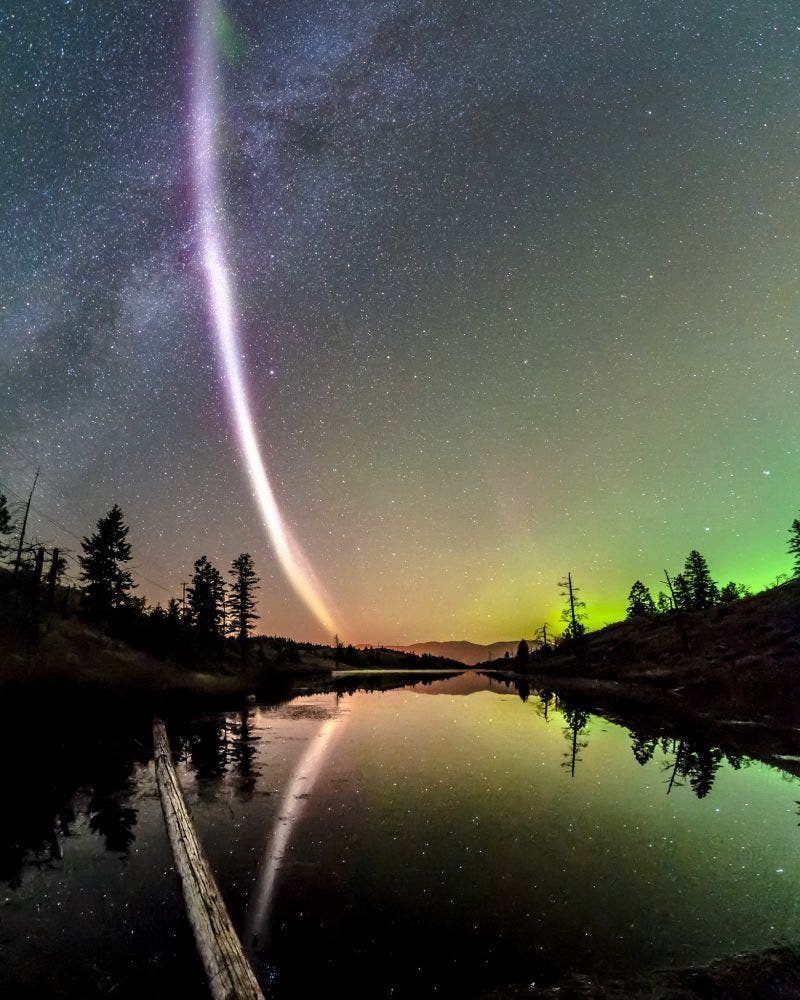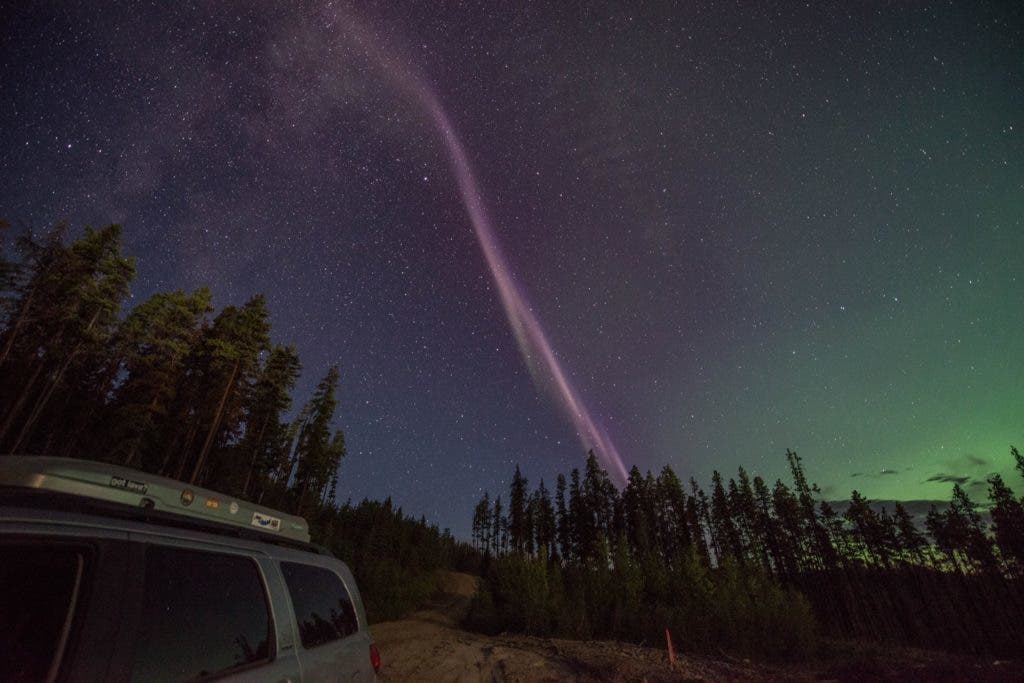In 2016, odd ribbons of purple and white light were brought to the attention of scientists, who classed it as a new type of aurora. In reality, the beautiful beam of light (called STEVE) may be far more interesting, after physicists concluded in a new study that it may actually be an entirely new celestial phenomenon.
Aurora chasers and star enthusiasts have been sighting STEVE for decades but it was only recently that scientists were called in to make sense of it. Initially, physicists classed STEVE as a ‘proton arc’ — another rare type of aurora, which isn’t caused by electrons hitting Earth’s magnetic field but by more massive proton outbursts following a solar flare. Later, with the help of NASA –which sent a swarm of satellites right through a STEVE event — scientists found that accelerated and heated charged particles may have been interacting with a particular part of the Earth’s magnetic field in the ionosphere.
The data suggested that STEVE is a “subauroral ion drift.”
Researchers at the University of Calgary in Canada weren’t convinced, though. STEVE shines in thin ribbons of purple, rather than in red, green, or yellow curtains, as is the case of typical auroras. This suggested that the light show is cut of a different cloth from an aurora. Another clue was that STEVE is only visible a few times per year while auroras are visible every night if viewing conditions are right.
The researchers decided to focus on a STEVE event in March 2008, which was recorded using both ground-based cameras designed to track auroras but also NOAA’s Polar Orbiting Environmental Satellite 17, which was directly overhead at the time. The analysis showed that STEVE’s light isn’t produced by particles raining down into the ionosphere, as typically happens with the aurora. This means that STEVE is an entirely new phenomenon distinct from typical auroras.
“Our main conclusion is that STEVE is not an aurora,” said Bea Gallardo-Lacourt, a space physicist at the University of Calgary in Canada and lead author of the new study.
“So right now, we know very little about it. And that’s the cool thing, because this has been known by photographers for decades. But for the scientists, it’s completely unknown.”

Credit: Dave Markel Photography.
The new kind of optical phenomenon is called “skyglow”, the authors wrote in the journal Geophysical Research Letters. In the future, the researchers plan to determine whether streams of fast ions and hot electrons in the ionosphere are creating STEVE’s light, or if the light is produced higher up in the atmosphere. In the process, scientists will gain a better understanding of the upper atmosphere and the light-generating processes in the sky.
“This is really interesting because we haven’t figured it out and when you get a new problem, it’s always exciting,” said Joe Borovsky, a space physicist at the Space Science Institute in Los Alamos, New Mexico who was not connected to the new study. “It’s like you think you know everything and it turns out you don’t.”










